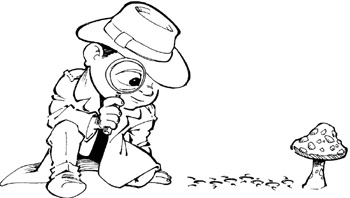Chapter 8: Game Analysis: Tetris
Overview
Designed by Alexey Pajitnov Released in 1987

Few games are as universally well respected by game developers as Tetris . Often when a game becomes as popular as Tetris has, with versions for every system imaginable and untold millions in sales, gaming professionals start complaining about what a poor game it is. Myst is a good example of this. On its release, the title received near universal praise from the gaming press for being a fun adventure game in a beautifully conceived world. Game developers themselves , though not quite as enthusiastic, still thought it was a good game. Multiple millions of copies later with years spent on the best-seller charts , the same gaming press found reason to start hating the game and its amazing continued popularity. Game developers are particularly loud in voicing their dislike for the game. Is the game worse now? No, of course not. Do gaming professionals, press and developers alike, resent the game for its sales? It would appear so.
But this is not the case with Tetris . Tetris conquered the world in terms of popularity,yet one is hard pressed to find anyone with a negative comment about the game. What is it about Tetris that makes the game immune to criticism? It would appear something about the game s simplicity and clearness of design vision makes even the most cynical game developer concede the game s greatness. Contrary to what happened with Myst , when Tetris was first released, most of the gaming press dwelled on the game s origins in Russia and seemed underwhelmed, or at least unexcited, by the title s gameplay. The game was so simple, its technology so lacking in razzle- dazzle that, perhaps, the press found themselves incapable of writing enthusiastically about the game ” at least at first. Now that the game is an undisputed classic, any game critic will be happy to tell you about the hundreds of hours he spent blissfully lost in the game.
Gameplay in Tetris is exceedingly uncomplicated. The game-world is a tall, rectangular, 2D box. Blocks appear at the top of the box. The blocks are made up of four squares arranged in every possible pattern where all the squares share at least one side with another square. The blocks then slowly fall to the bottom of the box, and players are able to move these blocks to the left and right, or rotate the piece in 90 degree increments . Once the block hits an obstruction, either the bottom of the box or another piece, the block stops moving, players lose control of the block, and another piece that players can now control appears at the top of the screen. When the blocks at the bottom of the screen forma horizontal line across the rectangle, that line of squares disappears, and any squares above that line move down one row. The players game is over once incomplete rows of the blocks fill up the game-world rectangle and subsequent pieces are prevented from entering the play-field.
EAN: 2147483647
Pages: 189